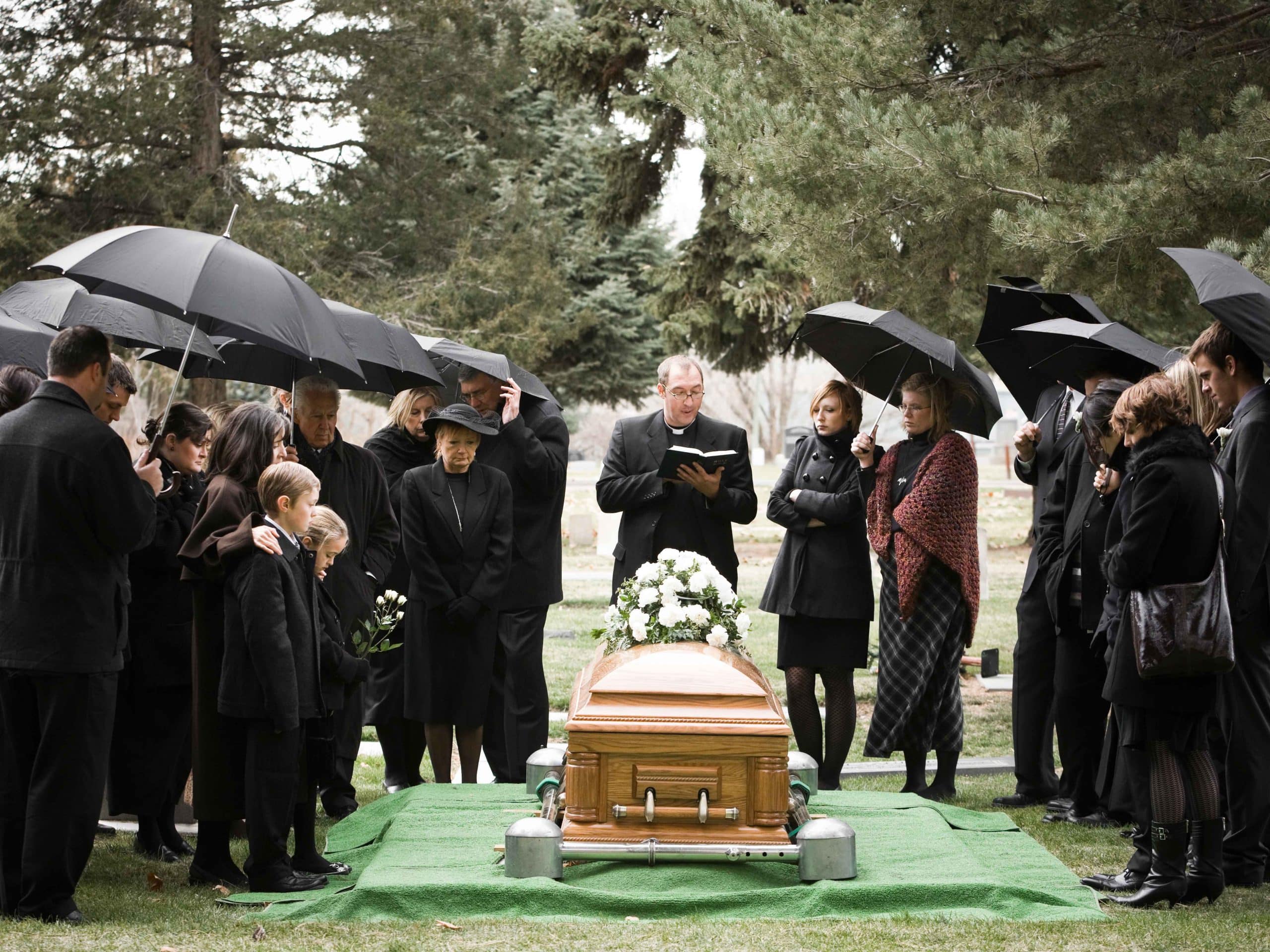When someone close to us dies, we’re hardly in the right frame of mind to handle logistics and practical matters. Yet, often, this is the first thing we’re forced to confront.
There’s the matter of the deceased’s body and how it will be handled, but also funeral arrangements and ceremonial planning to honor the life of the person we’re grieving.
Funeral planning requires people to make multiple decisions while experiencing difficult and intense emotions. Making matters even more challenging, funeral arrangements are financially taxing.
In America, the funeral industry is essentially unavoidable after someone close to us dies. Because the funeral industry is ubiquitous and homogenous — offering the same services, same processes and procedures for after-death care — we rarely question it. But there’s a lot about the funeral industry you may not know.
Here are five facts about the funeral industry that will probably surprise you:
1. The funeral industry pulls in big dollars.
In the U.S., funeral homes are a $20 billion dollar annual industry. Most funeral homes are privately owned, and increasingly, more funeral homes are owned by large corporations.
Service Corporation International, the largest death-care corporation in the country, owns and operates more than 1,400 locations in North America and brought in more than $4 billion in revenue in 2023.
“Families are hurting. They are not only losing someone meaningful in their lives, their losses are compounded by the soaring costs in burials and cremations,” says Evermore founder Joyal Mulheron. “The funeral industry is well-funded, made only more profitable by our nation’s concurrent mortality epidemics — just look at their revenue statements.”
According to Statista, there are nearly 19,000 funeral homes in the U.S., yet there remains a surprising lack of competition in the industry. In the past several decades, larger funeral service companies, and in some cases, private equity firms, have bought up smaller, family-run businesses that were well-known and trusted in their communities.
The result has been a growing monopoly on the industry by fewer wealthy — and powerful — businesses. The industry’s consolidation was the central storyline for the 2023 hit The Burial, starring Tommy Lee Jones and Jamie Foxx and directed by Maggie Betts.
2. The funeral industry is poorly regulated.
The funeral industry is primarily regulated by the Funeral Rule. Introduced in 1984 by the Federal Trade Commission (FTC), the Funeral Rule was established to prevent vulnerable families from being exploited by licensed funeral homes after the FTC found widespread deceptive practices that limited consumers’ ability to make informed decisions. Today, if funeral homes violate the Rule, they may be subject to penalties of more than $51,000 per violation.
While this seems like a strong deterrent, the FTC granted the funeral industry a “sweetheart deal” more than 25 years, according to the Wall Street Journal (WSJ). When funeral homes are found to be in violation of the Funeral Rule, they can opt to participate in the Funeral Rule Offenders Program (FROP), a training program run by the National Funeral Directors Association (NFDA), which is the industry’s largest trade association and lobbying group. The offending funeral homes who enroll in the program become members of the association.
Essentially, the organization that lobbies lawmakers for fewer industry regulations is the same entity responsible for “policing” and penalizing offending businesses. NFDA conceals violations from American consumers and according to some experts, “it’s essentially a hush-money business.” However, the WSJ secured a list of 538 funeral homes that violated the Funeral Rule and publicly reported them earlier this year.
3. With no price transparency requirements for the funeral industry, consumers are highly vulnerable to overpaying.
In October 2022, the FTC revealed that more than 60 percent of funeral homes have little to no pricing information on their websites. This leaves consumers in a particularly vulnerable position.
“Imagine losing your child and then having to negotiate where their body goes and how much you’ll pay for it, all within hours,” says Mulheron. “When our own daughter was terminally ill, I called several funeral homes in hopes of identifying one where she could be taken once she died. Several told me they would ‘cut me a deal’ if she died soon. One facility, more than an hour away from our home, said, ‘We charge our flat rate for children of $400.’ We need more people like this leading the industry, not private equity brokers.”
Funeral costs for a single death event are significant, especially for families who struggle to cover the ongoing costs of housing, food, and medical care. According to a 2023 NFDA survey, the average cost of a funeral with a viewing and burial is nearly $8,300. A funeral with cremation costs only about $2,000 less.
These costs don’t take into account the costs of the cemetery, monument, marker, or other miscellaneous expenses, such as flowers. According to the Funeral Alliance Association, these added expenses often increase the total cost of full funeral services by $2,000 or $3,000.
4. Plan your funeral, but don’t prepay!
Following the WSJ’s release of the 538 funeral homes that violated federal law, a second WSJ article featured several stories of individuals who tried to act responsibly by paying for their own funerals in advance of dying. In some cases, their families ended up paying twice or more than the initial contracted amount. Whether it is lost paperwork, industry consolidation, “the fine print,” or something else entirely, it’s best to plan for the funeral but not pre-pay, then share your desires widely with family and friends.
5. Rather than regulate, your hard-working tax dollars are being used to reimburse funeral expenses.
In 2020, Congress passed a bill reimbursing some families for funeral expenses and only if they lost a loved one to COVID-19 (i.e., if your loved one died from overdose, homicide, or suicide, for example, you do not qualify for reimbursement). As of today, the Federal Emergency Management Agency (or FEMA), responsible for managing taxpayer reimbursement dollars for funeral expenses, has distributed $2.8 billion to 438,000 approved applications, with an average award of $6,400.
Fortunately, the federal government is beginning to act. The FTC has initiated a regulatory process indicating it will reissue the Funeral Rule. Evermore submitted comments to the FTC and is continuing to follow along. However, this process can take years and there is no indication on when the FTC might act. There is reason to believe that the industry will sue the FTC when it does act, further delaying price transparency.
It’s time for the funeral industry to join the digital age by sharing prices online. If we, as a nation, focus on closing down children’s lemonade stands for operating without permits, we can easily protect consumers from the funeral industry’s bad actors. After all, as Benjamin Franklin said, “nothing is certain except death and taxes.”
—
We welcome readers to share their experiences working with funeral homes — positive or negative, confusing, frustrating, or supportive. If you have a story to share, email us at hello@stagingevermore.dbdodev.com.

